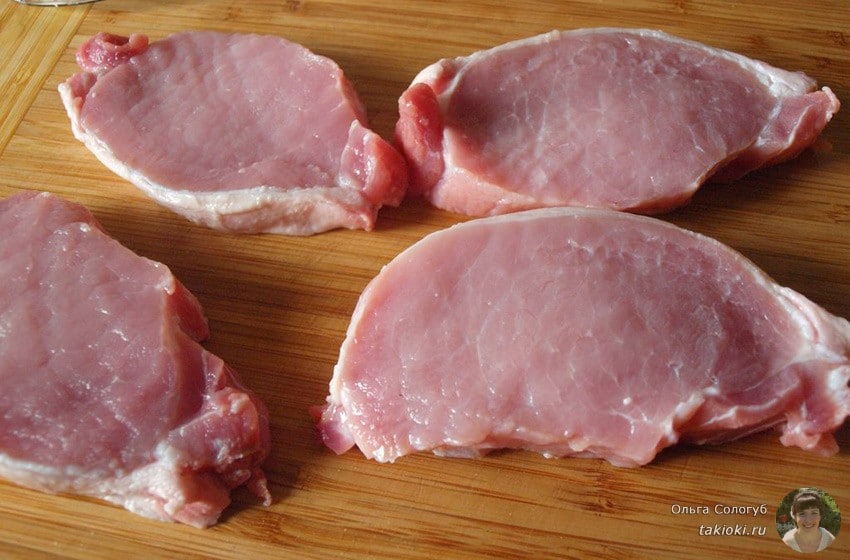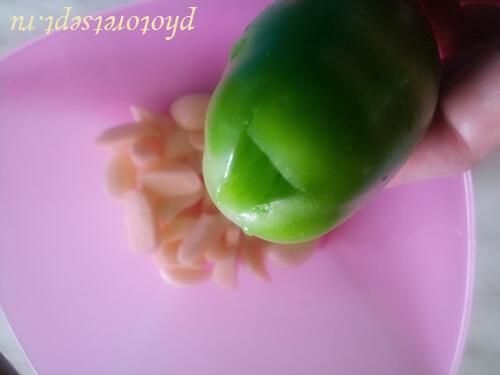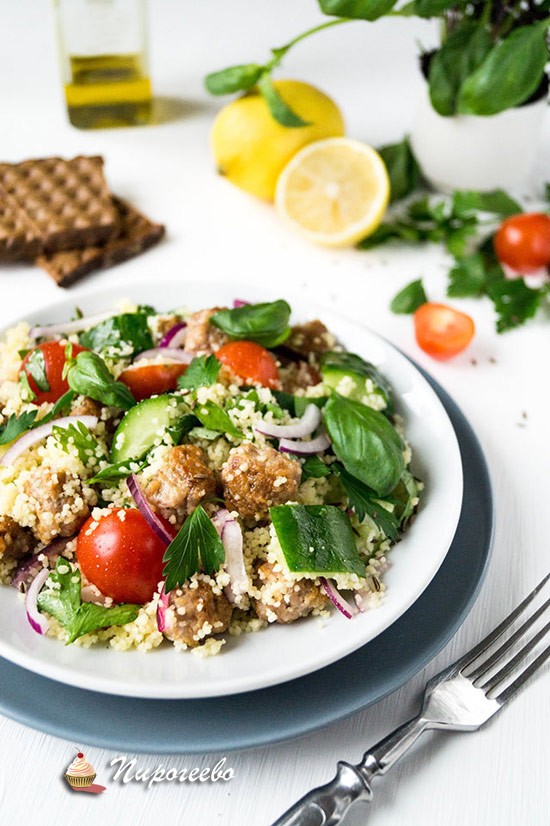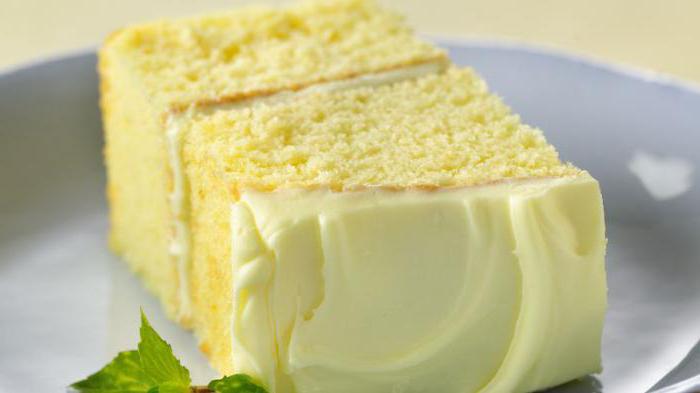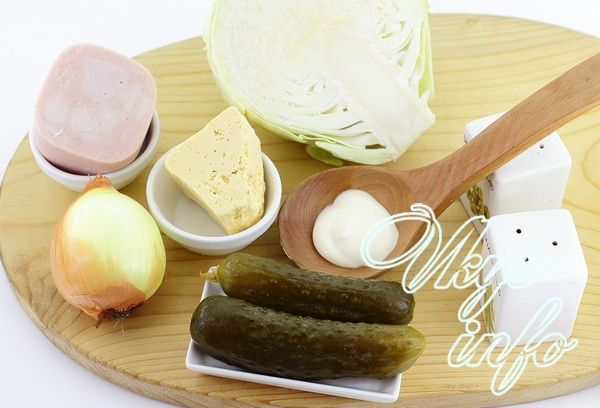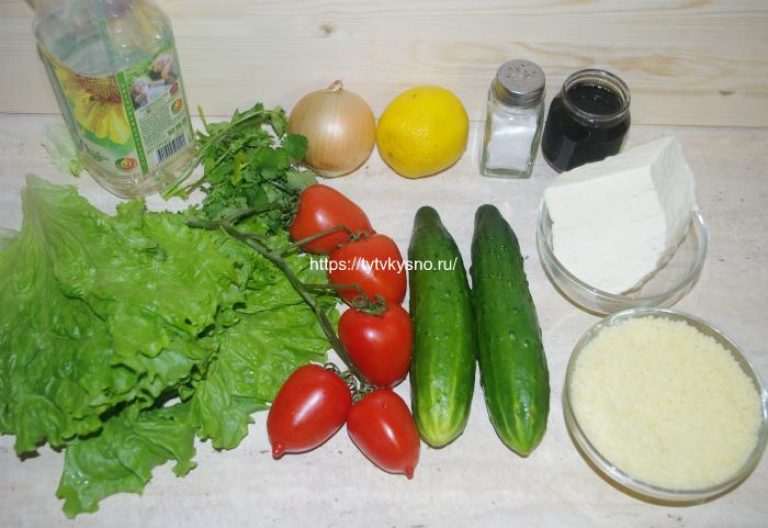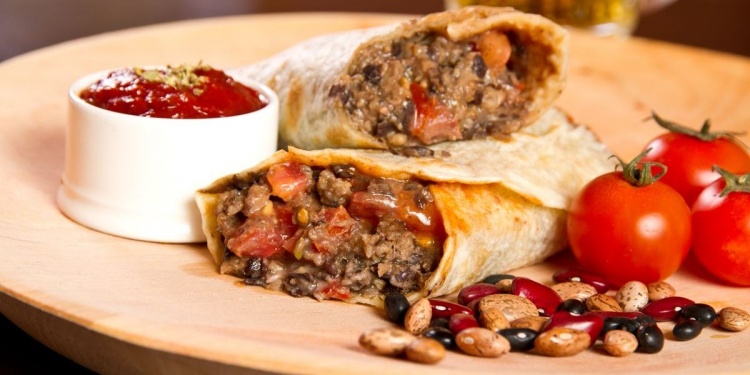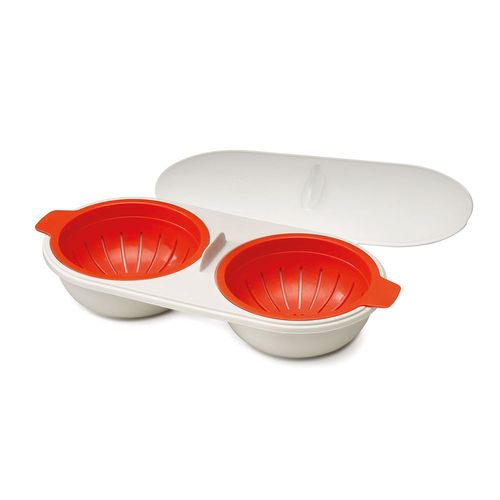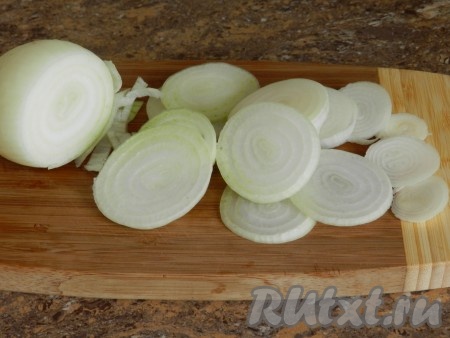Carambola - what benefits can you get from a fruit and how to eat it? Carambola - we grow exotic fruit from the tropics at home.
Carambola ( Averrhoa carambola), cannon or kamrak - the fruit of an evergreen tropical tree from the Sorrel family, common in the Philippines, Malaysia, Sri Lanka, India, Indonesia and Bangladesh. In cross section, this fruit has the shape of a star, therefore it is also called a "tropical star" or "starfruit."
In the mature state, the fruits of carambola are yellow in color, the pulp is juicy, but crisp and dense, the taste is sweet and sour, resembling at the same time pears, apples and citrus fruits. In unripe form, the fruits are sour, the aroma is with a touch of green apples. It is noteworthy that this fruit is edible not only the pulp, but also the wax skin.
Compared to many other tropical fruits, the calorie content of these fruits is significantly lower: in one cup of raw - only 41 calories.
Moreover, the absence of vitamins (C, A, thiamine, riboflavin, niacin, folic acid and vitamin B6), minerals (calcium, magnesium, potassium, zinc, copper, phosphorus and iron) and antioxidants do not have to complain.
It is a good source of fiber, as well as phytonutrients and flavonoids such as epicatechin, quercetin and gallic acid, which are powerful antioxidants.
Benefit for health
Eating carambola as a food means numerous health benefits. See for yourself!
- increases immunity due to the high concentration of vitamin C, protects against flu and colds;
- it is a wonderful source of soluble fiber that improves digestion and prevents constipation;
- tropical stars saturated with antioxidants impede the development of certain types of cancer, including uterine cancer;
- at a low level of fruit sugars, a large amount of dietary fiber in the composition of fruits and leaves of carambola makes it an excellent diabetic product that prevents surges in blood glucose levels, say scientists from China;
- experts note the strong antimicrobial properties of this tropical fruit when it comes to combating E-Coli, salmonella and staphylococci;
- can be used in various diets due to low calorie content and at the same time good fiber content (gives a feeling of satiety for a long time);
- the high content of folic acid in the fruits of tropical stars is especially attractive for pregnant women, and in nursing mothers this product stimulates the production of milk;
- prevents arthritis and gout due to vitamin C, which timely removes excess uric acid from the body - the main cause of joint inflammation;
- it is a natural diuretic known in Chinese medicine for several centuries;
- the rich mineral profile of carambola provides it with another useful property aimed at strengthening bones and preventing osteoporosis;
- can be used as an expectorant and antipyretic; it helps with coughing and sore throat;
- the benefits of starfruit for the eyes are not limited to vitamin A alone, fruit antioxidants prevent cataracts and inflammation of the eyes;
- eating carambola will protect you from many cardiovascular diseases, in particular, from atherosclerosis and hypertension - a scientifically proven fact;
- used in the treatment of headache;
- helps to cope with a hangover;
- anti-inflammatory components of tropical stars are used in the treatment of psoriasis and atopic dermatitis.
Cosmetic properties
- For the skin. Regular consumption of these tropical fruits delays the aging process of cells, prevents the appearance of wrinkles and age spots on the skin. Carambola moisturizes the skin, maintains its elasticity. It is considered an effective cosmetic product for oily skin. Due to its zinc content and anti-inflammatory components, it fights acne and other skin infections.
- For hair. The inclusion of tropical stars in the diet will be a significant contribution to the health of your hair. Carambola nutrients make hair strong, promote their growth, strengthen roots, saturating them with vitamin C.
Harm and contraindications
Starfruit contains a significant amount of oxalic acid, therefore it is harmful to people suffering from kidney diseases, especially those who are on dialysis.
The multicomponent composition of carambola has its drawbacks, as some of its compounds can interfere with the absorption of other vital substances from the body.
The fruits of a tropical star are not compatible with statin drugs and benzodiazepines (e.g. diazepam).
Culinary potential
In Asia, carambola is used in the same recipes as apples. They make juices, jams, jellies and compotes from it. When dried, these fruits are popular in the Caribbean. In their immature form, they can be eaten with salt to reduce acidity. A tropical star sorbet is a true gourmet treat.
Starfruit is perfect as a side dish for fried chicken or shrimp. In pureed form, it can be used as dressing for salads and for the preparation of marinades.
In Europe, the fantastic taste and useful properties of carambola have not yet been fully appreciated, however, here too its popularity is gradually increasing.
How to choose and how to store
- For fresh consumption, choose ripe fruits of sweet varieties of bright yellow color with fleshy ribs on which a brown stripe appears. Sour varieties are used for side dishes and other exotic dishes, including as a substitute.
- The fruit should not be soft. On good specimens, when pressed, no dents remain.
- Connoisseurs claim that the aroma of mature carambola resembles that of jasmine.
- Unripe fruits can be allowed to ripen at room temperature.
- Unwashed tropical stars should be stored in the refrigerator in polyethylene for a week.
Wash fruits thoroughly before use, cut out brown patches, and remove seeds. To your health!
The useful properties of carambola are really impressive. Perhaps after reading this article you will no longer pass by these wonderful fruits, flaunting on the shelves of some supermarket.
Fruit star of the tropics of carambol!
This exotic has many names: cannon, gherkin, tropical star, starfruit (that is, “fruit star”), illicium, star apple.
Carambola is a traditional fruit for residents of Southeast Asia. Here it is an ingredient in many dishes and medicine. The rest of the world considers it exotic and tastes it with pleasure.
Carambola is an evergreen plant of the acid family.
Botanical features
The tree grows three to six meters. The leaves are similar to "brothers" with acacia, but larger, up to half a meter. Bottom covered with a white fluff. “Fold” if there is little light or they are touched. Trees abundantly bear fruit twice a year. The fruit season is determined by where the carambola grows. In Thailand, for example, this is May-August.
Distribution area
Homeland exotics - tropics or subtropics. Presumably, the Moluccan archipelago or Sri Lanka. Today, star fruit is cultivated in Southeast Asia, India, the Indonesian and Philippine archipelagos. Plantations are in Australia, West Africa, USA, Brazil, Israel.
World number one supplier is Malaysia.
Carambola in Russia
In Russia, carambola is available all year: Israel, Brazil, Southeast Asia share it.
The closest relative of the unusual fruit is sour, an inhabitant of central Russia. Therefore, a tree can be grown at home. Despite the "star" surroundings, the plant is unpretentious, does not need year-round hot sun.
With proper care, it is real to wait for the harvest.
What does carambola look like?
The fruits of carambola are original, it is difficult to confuse them with other exotics:
- They resemble ribbed cucumbers or “airships” 7-18 cm long. The depth of the ridges is 1.5-2 cm.
- It is easiest to evaluate the configuration by looking at the cross section. Usually this is a five-pointed star, there are instances similar to a star with four to eight ribs.
- The peel is thin translucent glossy. In unripe specimens, green. The color of the ripe fruit is all yellow, from beige to orange, depending on the variety.
- The average weight of the fruit is 75-135 g.
- Inside are flat seeds.
- The pulp is tender, juicy, crispy, matching the color of the peel.

Star fruit ripened on a tree appears transparent, letting in sunlight.
How to eat carambola
Tourists consume mainly freshly ripe ripe carambola. But it is worth tasting in any form.
How to choose carambola
With how to choose carambola, there are no special difficulties. Ripe quality fruits have the following characteristics:
- smooth, without damage;
- elastic, when pressed, dents do not remain;
- ribs solid, “thick”, slightly separated;
- they have a dark brown strip; it is she who confirms: the fruit ripened on a branch;
- color is saturated yellow or yellow-golden;
- light aroma of jasmine.
Size does not matter: it depends on the variety.
Such specimens are available at home, that is, in the subtropics. Transporting them is problematic.

Carambola to taste
The taste of the “star” is a complex concept. In different varieties, ripe and immature specimens, it is different.
Everyone agrees on the following points:
- any ripened exot is very tasty;
- ripe sweet taste is complemented by acidity;
- it is impossible to compare carambola with one fruit, it is a “symphony” of several notes.
There is no unity about the details. Each captures its motives, the options are endless:
- plus gooseberries;
- composition,;
- banana-strawberry;
- -orange.
And so on.
The aroma exuded by ripe fruits is associated with jasmine. Green exotics are sour, more like a vegetable. And their smell is “vegetable”, closer to the cucumber. Sour fruits are appreciated by the locals as more useful (in their opinion).
How to eat carambola
Ripe fruits are edible whole, including peel. Only the bones are removed. Usually relish the "star" just - like a cucumber. That is, bite off the pieces. Large specimens can be cut. Cut with a usual well-sharpened knife across - plates from a half centimeter to a half wide. If brown strips are confused, they are cut off, sometimes with a peel.
Culinary use

Asian culinary specialists use carambola as an independent product, decoration or component of dishes:
- Asterisk fruit plates look exquisite, the flesh does not darken for a long time. It is not surprising that they are used as decor for cocktails, desserts, salads.
- Juice is added to cocktails in order to give exotic drinks.
- Fresh ripe star fruit carambola makes desserts. One of the most popular is to boil in syrup. Technology is like with watermelon peels. In such "candied fruit" aroma amplifies. No less popular are jellies, sorbets, marmalade, puddings. In Hawaii, for example, they like sorbet from carambola juice, and gelatin.
- Unripe specimens are used as vegetables: stew, salted, pickled, added to vegetable stew.
- In India, the “star” is an indispensable component of many seasonings.
- Thais prefer shrimp fruit.
- In Chinese cuisine, fish and meat are flavored with acidic star plates. Sliced \u200b\u200bmoderately fried fruit served on the side.
- Chopped pulp is a component of sauces.
Mature specimens do not need processing, but before serving, they are thoroughly washed, especially intercostal cavities. Cut off the ends, dried up sections of the peel.
How to store
Fruits destined for export are removed unripe in order to be delivered in the proper form. They are present in supermarkets - greenish or yellowish, with narrow, distinct ribs. In the cold, unripe fruits are stored for up to three weeks, ripe for a week. If there is no refrigerator, ripe exotics should be eaten in two to three days, immature ones in a week.
You can “ripen” green carambola at room temperature. However, it will not become sweeter or more aromatic, it will last a maximum of five days.
Composition and benefits of carambola
Like any tropical exotic, starfruit is good for health and beauty.
Composition
The fruit found a bouquet of vitamins and minerals.
Vitamins:
- A (beta carotene);
- B1 (thiamine);
- B2 (riboflavin);
- B3 (nicotinic acid);
- B5 (pantothenic acid);
- B9 (folic acid);
- C (ascorbic acid).
- E (tocopherol).
Minerals: iron, phosphorus, calcium, sodium.
A feature of the “star of the tropics” is its high content of oxalic acid, potassium, and antioxidants.
Carambola is saturated with flavonoids (quercetin, epicatechin, gallic acid). Bactericidal properties are confirmed.
Calories Nutrition Facts
The energy value of the miserable fruit is 37-42 kcal per 100 grams of fresh pulp. Even in the sweetest grades no more than 4% sugar was found. For this "star" exot is appreciated by fans of healthy eating or people who follow the figure.
Dried carambola has a calorie three times higher, it is useful for quick recovery.
100 g of pulp contain (g):
- proteins - 1.1-1.2;
- fats - 0.03;
- carbohydrates - 6.5-7.1.
The fruit seems watery, which is not surprising: almost 90% of its composition is water.
The beneficial properties of the fruit
Official science believes that the healing effect is achieved thanks to the vitamin-mineral complex.
For example, fruits contain thiamine, other B vitamins that regulate and normalize:
- digestion, functioning of the nervous system (B1);
- condition of blood, thyroid gland, skin, hair (B2);
- adrenal glands, cholesterol, hemoglobin (B5).
Natural acids have a “zone of responsibility”:
- pantothenic inhibits the development of allergies, colitis, preserves heart health;
- ascorbic acid enhances immunity, puts a shield on diseases;
- oxalic stimulates the work of muscles, stabilizes emotions, helps to absorb calcium;
- folic is indispensable in pregnancy;
- gallic (along with other flavonoids) is involved in the oxidation and elimination of free radicals.

Traditional medicine
Oriental healers use leaves, flowers, fruits of a tree:
- Drugs are prescribed for headaches (up to migraines), weakness, dizziness, and hypertension.
- The crushed bones are a remedy that helps hypertensive patients with colic, sudden cough, up to asthma attacks.
- Whole leaves are applied to the forehead for headaches. Crushed stop diarrhea, treat hemorrhoids, gall bladder diseases, chickenpox, lichen, other skin ailments.
- Fruits are used as a hemostatic agent.
- Juice neutralize the hangover syndrome.
- Roots rubbed with sugar become an antidote, effective even in case of serious poisoning, an anthelmintic and diuretic.
Hazardous properties of carambola
Fruit harm is a speculative concept, incomparable in scale with useful properties.
The only thing that should alert people with stomach or intestinal problems is a high content of oxalic acid. It can aggravate the following pathologies:
- gastritis;
- stomach ulcer;
- duodenal ulcer;
- colitis;
- kidney disease.
Excessive intake can upset the salt balance of the body, provoking the formation of kidney stones or kidney failure.
Hiccups, vomiting, insomnia, muscle weakness, numbness are not excluded. These are markers of carambol intoxication. They can appear in half an hour or within half a day after tasting.
As with any exotics, individual intolerance is possible. Therefore, for the first tasting, one fruit is enough.
Conclusion
Thai housewives polish copper and brass home accessories with the pulp of unripe fruits, remove stains from clothes. For us, this is a monstrous extravagance (given the price of fruit in supermarkets).
If you are lucky to visit his "homeland", do not forget to grab a few copies.
And unripe fruits bought will turn an ordinary fish or meat dish into an exotic dish.
Carambola is an evergreen, slowly-growing tree 5 m high with drooping branches and a dense, highly branched, rounded crown or shrub.
Leaflets are soft, dark green, smooth on top and covered with whitish pubescence from below. Leaflets are sensitive to light and come together at night.
The flowers are small pink or purplish red.
The carambola fruits are fleshy, crispy and juicy, slightly spicy, with massive ribbed growths, ranging in size from a chicken egg to a large orange. Ripe fruits are amber yellow or golden yellow. They are unusual in shape - similar to a ribbed airship. On the cross-section is a python-pointed star, hence one of the names in English is star fruit, i.e. fruit star, star fruit, another name is tropical stars. The peel of carambola is edible. The pulp is juicy, slightly spicy. There are two types of fruits: sweet and sour. The taste of some fruits resembles the taste of plums, apples and grapes at the same time, others - gooseberries with the smell of plums. In the tropics carambola with sour fruits is more appreciated.
To taste, juicy strong flesh of carambola resembles a harmonious combination of green gooseberries, apples and cucumbers. The taste of some varieties resembles the taste of plum fruits, apples and grapes at the same time, others - gooseberries with the smell of plums. In the tropics carambola with sour fruits is more appreciated. The aroma is strongest when the cannon is slightly boiled in syrup until soft.
Carambola seeds are ovoid, oblate, light brown, up to 1.2 cm in length.
Calorie Carambola
Low-calorie, dietary product, 100 g of which contains only 31 kcal. Carambola is indicated for use by overweight people.
Nutritional value per 100 grams:
Useful properties of carambola
Karambola fruits contain organic acids (mainly oxalic), calcium, phosphorus, iron, sodium, potassium. The vitamin complex of carambola is represented by vitamin C, beta-karate, vitamins B1, B2, B5, provitamin A. Little is known about the healing properties of carambola. In folk medicine of Asia, its leaves and flowers are used for medicinal purposes.
In India, fruits are used as a hemostatic agent, including for hemorrhoids, juice or dried fruits are used against fever. Canned candied fruits are used to reduce bile levels, against diarrhea, and also to relieve a hangover syndrome.
In Brazil, as a diuretic and in the treatment of eczema. A decoction of fruits and leaves is used as an antiemetic. Leaves attached to the temples relieve headaches, and crushed leaves and shoots help with chickenpox and ringworm. Flowers are used as an anthelmintic. Carambola roots with sugar are an antidote for poisoning. Glutomic acid was found in the leaves, stems and roots of the plant. A decoction of crushed seeds of carambola fruit acts as a milk product and is easily intoxicating. Powdered seeds of carambola fruit are used as a sedative for colic and asthma.
Carambola perfectly quenches thirst and reduces blood pressure, acts as an excellent laxative, increases the body's defenses (due to vitamin C), and thanks to magnesium it removes excess fluid from tissues. Very useful for vitamin deficiency. Carambola juice is much more effective than a regular pickle, relieves a hangover. In addition, with its help you can whiten dentures. To do this, hold them in a glass of juice for several hours. If the juice is too strong, you need to dilute it with a quarter of distilled water. Carambola helps with headaches, fever and colic.
Canned candied fruits of carambala are used against diarrhea, as well as to relieve hangover.
Hazardous properties of carambola
The presence of a large amount of oxalic acid in acidic varieties of carambola requires caution when consumed by suffering enterocolitis,
Today, a real abundance of exotic fruits is presented on store shelves. Not all people know their correct name, and they have no idea whatsoever about taste. In our article, we will take a closer look at the star fruit. First of all, let’s focus on how it is correctly called and in which countries it grows. We also need to consider how to choose a ripe fruit so that it delights with excellent taste and is useful for the body.
What is the name of the fruit "star"?
In Europe, this fruit is loved for its unusual shape. It is enough to cut it across - and the original decoration for the festive table is ready. In different languages, the name of the fruit of an interesting form sounds differently - starfruit, cannon, tropical star, star apple. And all of them perfectly characterize the appearance of the plant.
The correct name of the fruit with an asterisk, according to scientific classification, sounds like - carambola. It belongs to the acid family, a kind of woody plants Averroa. The fruits grow on trees with a dense crown, reaching a height of 3-5 meters, and wide leaves up to 50 centimeters long. Glossy to the touch has a ribbed surface. In the context, the fetus forms a five-pointed star.
Where does carambola grow?
The birthplace of the star fruit is Southeast Asia. In the wild, carambola grows on the island of Sri Lanka, in India and Indonesia. The plant is acclimatized in Brazil, Guiana, some US states (Hawaii, Florida), Israel. From these countries, forms are often imported to Russia.

Tourists can admire how carambola grows when visiting Thailand. The plant blooms several times a year. At this time, his crown is covered with beautiful, pink-lavender flowers. After about 2 months, green ribbed fruits are formed, inside of which are several seeds. As they ripen, the fruits turn yellow. The length of carambol does not exceed 15 cm. The ripening period of the fruit falls on May-August.
If desired, carambola is easily grown at home from an ordinary seed. The plant is unpretentious in the care, shade-tolerant, not afraid of drafts. Medium watering required.
Taste of exotic fruit
We can say for sure that this fruit is very juicy. But his taste can be completely different. Unripe fruits, namely in this form they are removed from trees for subsequent import to Russia, are obtained quite acidic, with an unpleasant aftertaste. This fruit is more like a vegetable, such as a cucumber. Ripe fruits with massive ribbed growths have a fairly sweet taste. Carambola is often compared to gooseberries, apples, cucumbers, grapes and even oranges. In one plant several taste notes are connected at once, therefore it is so difficult to describe this tropical fruit. Due to its high water content and sweet and sour refreshing taste, carambol easily quenches thirst.

Fruit "star" in the context has an almost regular shape of a five-pointed star, so it is often used for desserts. At home, carambola is stored in the refrigerator for about three weeks.
Composition and benefits for the body
One of the pleasant advantages of the star fruit is its low calorie content. 100 grams of juicy and ripe carambola fruits contain only 34 kcal. The pulp contains a large number of minerals important for the body (calcium, magnesium, sodium, potassium, phosphorus and iron), as well as vitamins (C, B1, B2, B5, beta-carotene).
- weakened immunity and vitamin deficiency;
- headaches, dizziness, and fever;
- colic in the stomach and constipation.
Sweet and sour tropical fruits of an unusual shape are a source of antioxidants, have antimicrobial and antifungal effects on the body. The pulp of ripe carambola helps reduce glucose and cholesterol in human blood.

Asian healers use for medicinal purposes not so much the fruits as the leaves and flowers of the plant. But regular consumption of fruits will be enough to improve their condition and improve health.
Harm and contraindications
Due to the high content of oxalic acid, carambol may not be as useful as it seems at first glance. People with diseases of the kidneys, stomach and duodenum should refrain from eating sweet and sour fruits with juicy pulp. Oxalic acid can aggravate the course of diseases such as gastritis and enterocolitis. At the same time, the properties of this substance are used by residents of Asian countries in stain removal, as well as in polishing copper and brass.
Excessive consumption of carambola fruits can cause intoxication. Signs of this condition are hiccups, vomiting, numbness, muscle weakness, or insomnia. Intoxication occurs within 1-14 hours after the use of carambola.
How to choose ripe fruits?

Only fruits ripened on the tree have a sweet taste and pleasant jasmine smell. They differ in their characteristic bright yellow color and brown stripes on massive ribs. Unfortunately, they can be purchased only in places of direct cultivation of carambola. To import fruits over hundreds of kilometers, they still have to be picked green. Such fruits ripen directly on the store shelves or in a home refrigerator.
In Russia, choosing ripe carambola fruits will be quite difficult. Fruit "asterisk", presented in our stores, has a light green or pale yellow color. Until carambol is fully ripened and eaten, it should lie down at room temperature for several days or in the refrigerator for up to three weeks.
How to eat fruit in the form of an asterisk?
The unusual form of carambola allows the use of sliced \u200b\u200bfruits into thin slices as a decoration for drinks, desserts, fruit salads and other dishes. However, the use of an exotic fruit with an asterisk in cooking is not limited to this.

In Asian countries, carambola is used in the preparation of many interesting drinks and dishes:
- Sweet and sour fruit juice is added to alcoholic and non-alcoholic cocktails, giving them an exquisite taste.
- Unripe fruits are used as vegetables and are subject to frying, stewing and pickling.
- Ripe carambola is boiled in syrup and served as a delicious dessert.
- Sweet, naturally ripened fruits are used in making jam, marmalade and jelly.
- In China, cooks add carambola to meat or fish dishes, and also make delicious sauce from it.
When used raw, the fruits are not peeled, but eaten directly with a smooth and thin skin. First, the carambola is washed well with dirt removed from the hollows and ribs, and then cut into 1 cm thick plates.
It is hard to believe, but the exotic beauty of carambola has a completely Russian sister - sour, a modest forest berry growing almost everywhere. It is no coincidence that recently appeared on the Russian shelves of carambol already fell in love with our mistresses: cocktails are decorated with exquisite fruit, added to stews, and on Victory Day, craftswomen prepare patriotic desserts with five-pointed cannon stars. But not only the beauty of carambola is famous: this fruit is the real pride of Asia.
Originally from the country of spices
Cannon, tropical star, starfruit and just carambola - Wikipedia has collected the most popular names for this oriental guest. The lands on which these fruits first appeared are Sri Lanka, India and the Spice Islands in Indonesia, the Moluccas, where traditionally Europeans favorite aromatic additives were grown, ...
Now amazing cannon trees grow in many warm corners of the planet - in Brazil, Florida, Hawaii, Israel and the tourist Mecca - Thailand. If you search on the net for what a carambola looks like, photos will be shown by charming elongated fruits with 5-6 ribs, often with a green or brown strip along the entire length. But experienced tourists assure: the pictures are not able to convey all the charms of this plant. Fruit trees are very tall, from 3 to 10 meters, bloom almost all year round with delicate pink and lavender flowers. The ripened fruits of the cannon are translucent and seem to glow in the sun, turning into small flashlights of 5-12 centimeters ...
Cut across the wedges, oriental lanterns become small pointed stars - for this natural beauty, carambola is appreciated all over the world.
How to grow a star tree at home
Good news for exotic gardeners: it’s easy to grow elegant carambol at home in harsh Russian conditions. And you need nothing for this: a fresh stone of carambola, bought in a metropolitan supermarket or brought from vacation.
Even if you do not know anything about the carambol plant, growing at home will not bring any difficulties. Planting star fruit seeds is better in February, in an apartment mini-greenhouse. After 2-3 weeks, the first sprouts make their way, and soon the cannon must be transplanted - it grows very quickly. Asian beauty loves warmth, fresh air and moderate watering - provide the new tree with good drainage so as not to ruin the plant. The direct bright sun is also capable of harming a tropical star. You need to transplant the cannon once a year - and with careful care, after a couple of years, small lanterns will appear on the tree.
In nature, star fruit comes in two flavors - sour and sweet. The color is also different for the carambola plant - the photo of the fruit can show the fruits are bright and soft green, yellow and brown-orange.
When you plant a cannon at home, you can never know in advance what kind of taste and shade you get — this tree loves surprises. Experienced gardeners plant several seeds at once, and then they pick the sweetest fruits and leave the necessary carambola to bear fruit further.
What is useful carambola?
Like many fruits from the tropics, carambola usually flies immature to our counters and keeps ripe on the way. But the most juicy, sweet and healthy tropical star is the one that has ripened on a branch, recently plucked and sold somewhere in a Thai bazaar. If you are on vacation in Asia, be sure to buy freshly picked carambola - that is when starfruit will give you all its healing power and sweetness.
The healing properties of carambola have been little studied even in its homeland, not to mention the Western countries, and in vain. The strong “star” pulp contains vitamin C, which strengthens the body, thiamine (B1) - the main doctor for our nerves, riboflavin (B2), which is responsible for the beauty of nails, skin and hair.
Minerals in the composition of star fruit - magnesium, phosphorus, potassium, etc. - allow the use of carambola as an additional tool for a variety of ailments. Decoctions of dried or fresh stars are used for fever, headaches.
Flowers and leaves of cannon are known in medicine even more than the fruits themselves - they have long been used as a diuretic and hemostatic, for infectious diseases.
Danger of a tropical star
Karambola pulp is full of oxalic acid - thanks to this in Sri Lanka carambola juice is valued as an excellent stain remover for clothes.
But this same acid can be dangerous for people with high acidity of the stomach, ulcers and gastritis, especially with exacerbation. No need to refuse carambola if you have just such a diagnosis - but let the Asian star decorate not your salad, but just a glass with a cocktail.

How to choose the most delicious carambola?
Carambola is a fruit with a riddle: it is so called only in ripe form, immature carom is an ordinary vegetable. But if you have enough gifts for the vegetable stew from the Russian garden, you must choose the right carom in the store and in a noisy market.
In appearance, the ripeness of the cannon is difficult to determine, but to find a quality fruit is quite. The fruit should be even juicy color, without damage and specks. Color - from greenish to yellow and light orange, ideally - with brown stripes on the tops of the ribs. If the cannon is not ripe, then you can put it to ripen in the kitchen, juicy and sweet fruit will stand in the refrigerator for 2-3 weeks.
The taste of a ripened tropical star simply does not lend itself to description: someone compares it with "", someone with a dry apple. Many people think that carambola is like apple and plum at the same time, and most tourists are sure that the fresh taste of carambola is a mixture of cucumber and apple.
Cooking carambola
Those who are just getting acquainted with the Indonesian fruit often ask the question: carambola - how is this unusual asterisk? Ripe cannon is most often used for decoration: cocktails, ice cream, all kinds of salads, and they are eaten in pure form, simply cut into slices. Unripe vegetable cannons are especially appreciated in Asia - they are pickled, prepared with sweet and sour sauces, added to main dishes and baked with fish, meat and poultry.
If you are tired of traditional salads with, and other fruits of the tropics, you can cook baked pangasius with cannon.
You will need: fillet of any oily white fish (in our case, pangasius) 600 gr, carambola - 2-3 fruits, 2, lemon juice, greens.
We prepare the marinade: oil, lemon juice and soy sauce, fill in the fish, leave for 30 minutes. Three large carrots, pour on the foil, oiled, on a carrot pillow - pieces of pangasius, on top - slices of carom. We keep in the oven for about 30 minutes, then open the foil so that the fish are dried and the ends of the stars are browned (you can grill). Before serving, you can decorate with greens. That's all, simple, tasty and original ...



